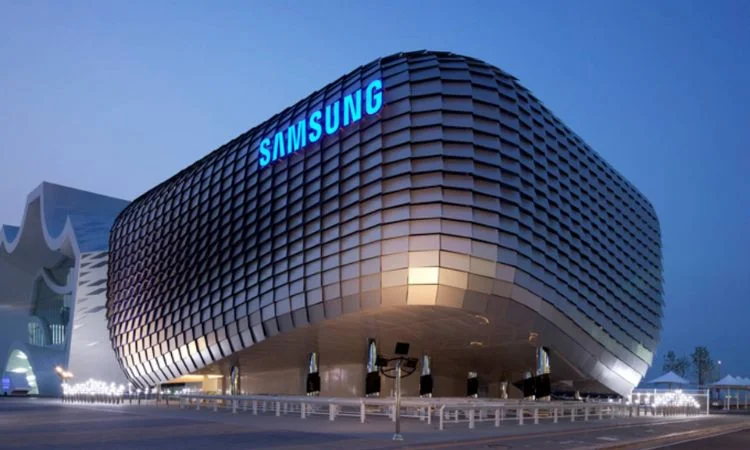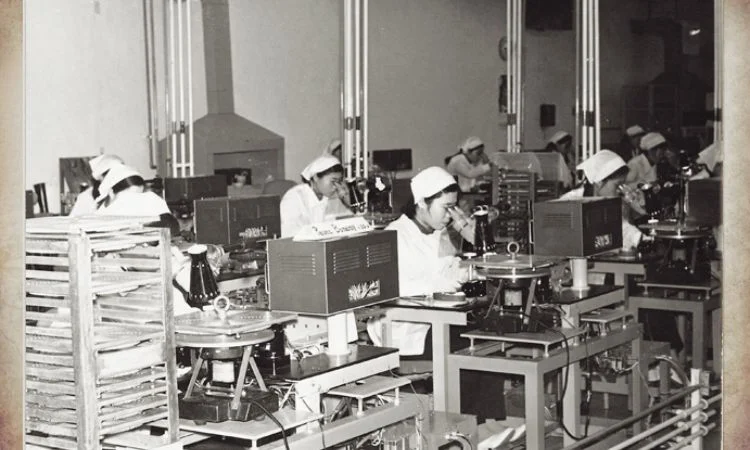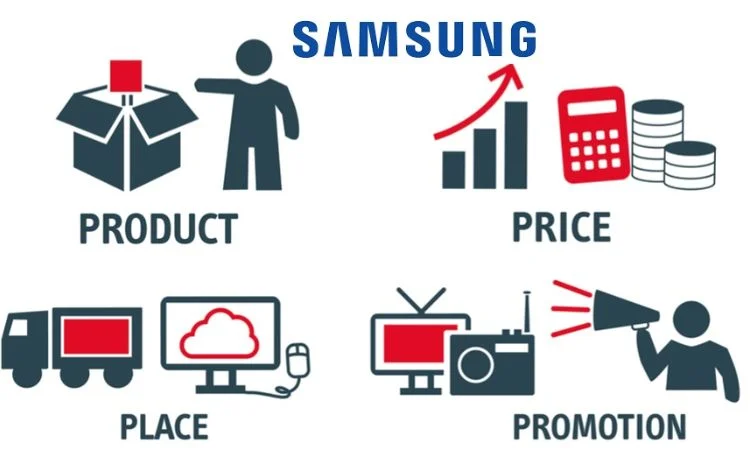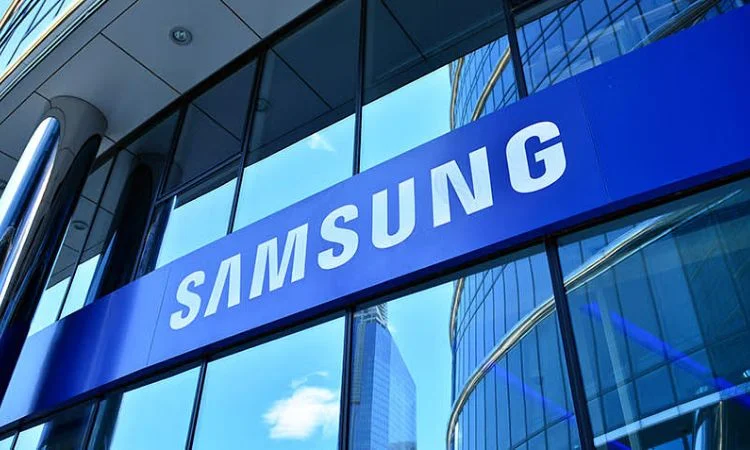In the world of technology, Samsung Electronics manifests itself as an outstanding pioneer that is proof of its continuous improvement. A South Korean company which initially stood for export, it is now using the technology as the foundation of its growth along with innovation and the ambition to affect how people interact on a global level. Given that the story of Samsung’s flourishing is beyond simple commerce, it is just symbolic of unshakable tenacity, creative ingenuity, and indomitable dedication to hold the standard of superiority that has not been seen before.

Source: Amazing Adviser
Samsung: Company Highlights
| Attribute | |
| Company Name | Samsung |
| Headquarters | Seoul, South Korea |
| Industry | Conglomerate |
| Founder | Lee Byung-Chul |
| Founded | 1st March 1938 |
| Areas Served | Worldwide |
| Website | samsung.com |
Samsung is a Korean leader of the manufacturing global industry with its main company office in Samsung Digital City of Suwon, South Korea. Consisting of numerous associated companies, most of which are divided into the highly famous Samsung corporation it is regarded as the largest chaebol in South Korea, which refers to a very big conglomerate of other businesses. Having been valued the eighth highest in the world as of 2020, Samsung owns the title of holding the best global brand value.
Samsung Success Story: History

source: Tech Philosopher
Samsung began in 1938. Its commerce operations were a small trading company and the founder was Lee Byung-chul who guided the advancement of the company. The startup had around forty employees to begin with, and it mainly traded in goods aiding the community in the wider surrounding area.
A major turning point in Samsung’s history occurred in 1947 when Lee Byung-chul opened an office in Seoul and launched a profitable endeavor into the sugar refining industry. Exhibiting his entrepreneurial zeal, Lee quickly expanded the company’s offerings, which culminated in the 1954 construction of Korea’s largest woollen mill, which was ideally located on the outskirts of Daegu city.
With the primary objective to industrialize Korea, Lee tackled several industries that could become a part of Samsung Group’s portfolio and thus make the company increasingly recognized as the leader in different fields. In the 1960s, the company was reborn by the flow of financial resources as Samsung stormed the electronics industry, using the capital assets to embody the innovative principle.
The first strategic milestone was achieved via the release of a Samsung black and white TV, that was well-received in the market. Today, Samsung not only owns over 6 divisions, between them covering a comprehensive product list that includes semiconductors, telecommunications, and hardware products, but it also has many other companies in its structure.
From the time of technological innovation up to today it needs a constant struggle for Samsung with legal challenges. Creating a dedicated development center in Warsaw, Poland in 2000 was a landmark step, where initially set-top-box technology was developed, followed by diversification into digital television and smartphones, ultimately contributing to the birth of what today we know as Samsung Galaxy line. Nevertheless, Samsung’s route to the Sixty-DOX has not been without legal disputes, and one of the most popular are the accusations of bribery and evidence fabrication against the chairperson, Lee Kun-hee, in 2007.
Besides these issues, Samsung can be said to be able to remain resilient and experiencing high growth rate and ultimately, this is how the company was able to emerge as the world’s biggest mobile phone maker, and this is happening at the face of unresolved patent issues with Apple. Among different problems the company faced in 2016 was when the fanatic Galaxy Note 7 battery threatened resulting in the loss of customers and canceling orders. Despite that, Samsung implemented crucial strategies including the creation of the world’s largest mobile manufacturing facilities which was launched in 2018 .
In 2023, Samsung lost a chunk of their profit to market demand fluctuations including the COVID-19 world situation, the global economy slowdown, which gave a result of a reduced number of Samsung memory memory chip productions.
Analysis of Samsung Business Segments
Samsung’s revenue portfolio leaves it with three divisions within which there is a varied number of business segments.
1. Consumer Electronics Segment:
This part deals with the surge of requests for electronic products which have benefited from the pandemic resulting decline in demand for different items notably such as televisions, smart wearables, or headphones . Primarily among these is the current global saturation, which makes it more difficult for Samsung to sustain its dominance in the conventional smartphone space. This is especially so compared to Chinese manufacturers, particularly in this area.
2. IT and Mobile Communications Segment:
The mobile devices and communications services representing a segment are pretty essential for Samsung in its strategic objectives, especially in the context of the mobile network and communications. Samsung has devoted much effort to making its own 5G product line that will suit well the full 5G services roll out to the market. Particularly, the current fiscal year saw the company invest more than $100 million in marketing worldwide via various digital media such as online application, print and television. Within the range of its services, in particular, in ChatON – a global mobile communication service of Samsung, which is compatible with the main phone platforms – it is possible to enter into one-to-one as well as group conversations.
3. Device Solutions Segment:
The next section covers semiconductor and display items which form part of the industry. Since 1993, being a very recognized vendor in the global semiconductor memory market, “Samsung” has impacted strongly on development and sustainable growth of the world’s IT industry. Furthermore, Samsung keeps on making very valuable inputs in the field of displays, which have been the driving force behind many of the technological advances in this area.
Samsung Success Story: Business Model

source: MBA Projects
The multifaceted approach of Samsung to its business operations is focused on a combination of different strategic issues in the process of its continuous existence. A detailed idea of these factors provide insight into why Samsung has successfully achieved that growth level.
The fact that Samsung must focus on the strategic partnerships and collaboration being the main underlying features if Samsung’s must be successfully entering the global market is very apparent. Samsung seeks to benefit from the business connections to the leaders of other industries that are strongly leveraged within its various product lines in order to champion the efficiency of knowledge and power of resources, which results in revenue from their innovation and marketing.
These partnerships are no less of a lifeblood to Samsung in terms of getting them more advanced gadgets and services which are at par with the changing consumer needs worldwide.
A central ingredient is diversity which constitutes an essential part of Samsung’s business model. Operating across electronics, information technology, mobile communications, and device solutions for consumers Samsung properly works its way into different sectors, minimizing the possibility of incurring risks that come with total dependence on a single industry.
In the very heart of Samsung lies a research and development (R&D) department which is ongoing to improve their business model. The vast expenditures that Samsung invests in innovation grants the company to often produce advanced technologies that respond to the markets’ demand and, in this way, keeps the company at the top positions in the industry.
In addition to this, the company’s commitment to environment protection which again implies CSR values reflects Samsung as a responsible business. Through ethical practices and environmental conservation along with community engagement, Samsung ensures its brand’s dignity and also contributes towards the good of the life of society and the world alike.
It is known from its business strategy that Samsung has displayed a certain degree of evolution during the course of time. Emerging from the humble roots in consumer electronics, Samsung sensed tremendous possibilities and room for maneuvering and reorientation as technology advanced at greater pace. The move to strategic shift not only helped Samsung capture a larger market but also gave the electronics company top priority in global industry leadership.
Samsung : Global Market Strategy
The global marketing strategy by Samsung is indeed the one that makes the company stand at attention like other people do.
Through astute market positioning and expansion initiatives, Samsung has secured a formidable presence on the international stage.
Market Positioning:
Samsung’s skillful market positioning is demonstrated by the variety of products in its portfolio, each of which is designed to cater to a different consumer group. The company has become an industry leader in many sectors by providing high-quality items at a range of price points. Customers really identify with Samsung’s dedication to quality, which helps to maintain Samsung’s leadership position in the market. Moreover, Samsung’s strong brand recognition and extensive distribution network have helped it to successfully enter a variety of markets, expanding its global reach.
Expansion Strategies:
Samsung takes a diverse approach while growing its business and entering new markets. One important tactic is to establish strategic alliances with other businesses in order to take advantage of their knowledge and complementary resources in order to promote expansion. In order to gain access to cutting-edge technologies and intellectual property, the corporation also actively seeks mergers and acquisitions.
Samsung Success Story : Challenges Faced

source: simplilearn.com
Samsung was charged with many labor violations connected to both child labor laws and adult labor abuse. To add more, some suppliers of samsung were also charged guilty for the same. The company investigated this and they suspended the business partners subjected to the law violations.
In 2012, Samsung had to face a court case in which Apple accused it of infringing its six registered patents. Apple sued over $2.5 billion, UI claimed. Samsung bore the converse of what was done by Apple through this lawsuit where Samsung seems to have violated Apple’s patents. Lastly, the ruling stated that Samsung had to pay millions of dollars as a part of compensatory damages and also said that Apple did not override any of the patents. The verdict, also, declined Samsung’s request for Apple Smartphones’ sanctioning transaction.
Samsung was confronted with a huge problem that was the death of the founder Lee Byung-chul in 1987. Split into 5 teams the company was. The company was not deterred by the difficulties and concentrated on growth oriented strategies to the different sectors under its influence. As a result of this, Samsung became and continues to be one of the global brands.
Samsung: Subsidiary Company
| Subsidiary Company |
| Samsung Electronics |
| Samsung C&T Corporation |
| Samsung Heavy Industries |
| Samsung SDS |
| Samsung Life Insurance |
| Samsung Fire & Marine Insurance |
| Cheil Worldwide |
Samsung: Top Competitors
| Competitors | |
| Apple | Consumer electronics, mobile phones, tabs, laptops |
| Intel | Microprocessors, semiconductor chips |
| LG Electronics | TVs, computers, vehicle components, home appliances |
Conclusion
In conclusion Samsung is the strong player in the field of technology that represents the will of man to grow all the time, innovate and make a positive influence globally. Blending a humble trading company established in 1938, Samsung Company’s history can be divided into four main periods. Initially, the group operations focused on consumer electronics, IT, mobile communications, and device solutions.















